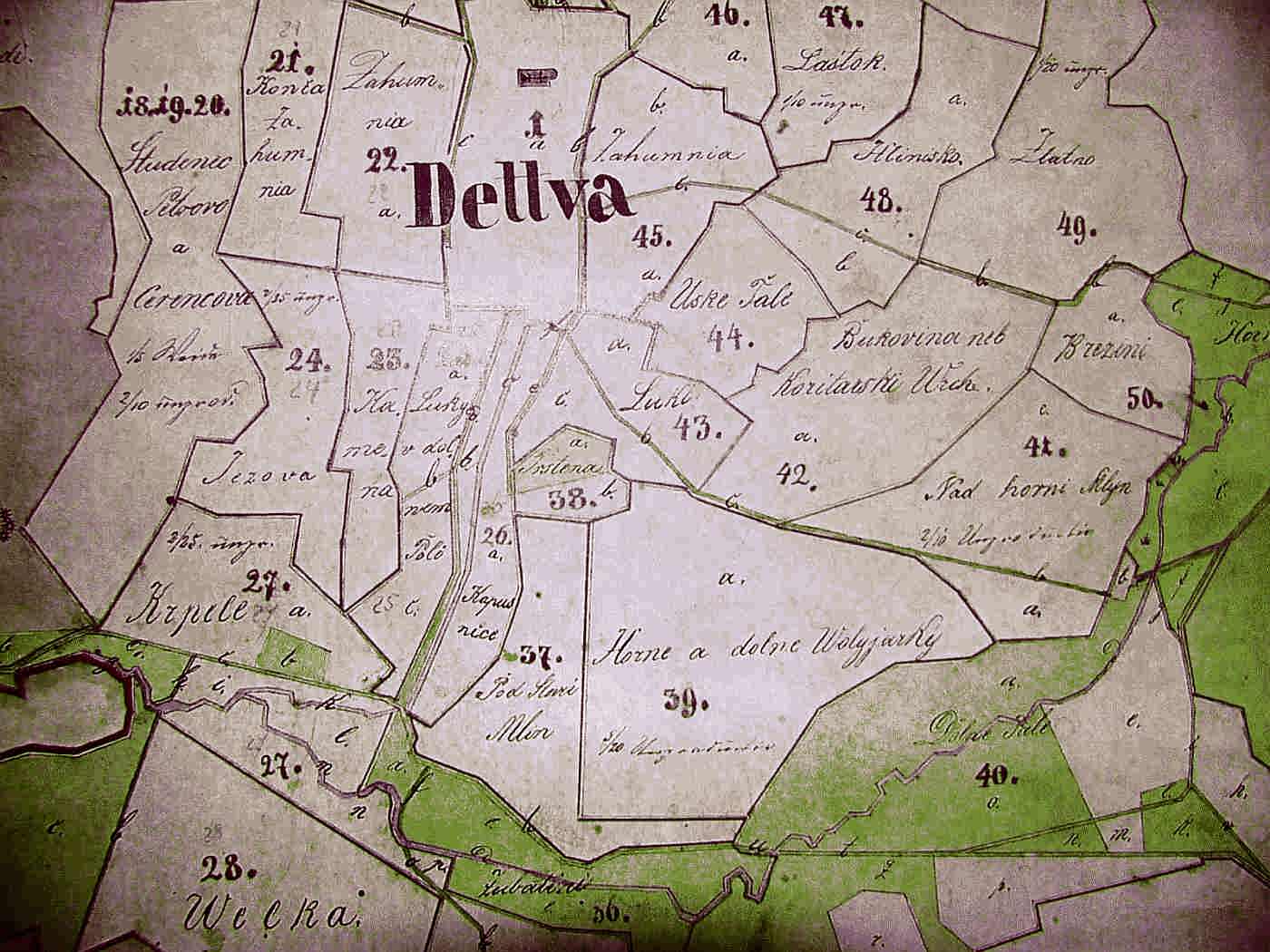| Foundation of ... |
Foundation
of the town of Detva
In the difficult times that prevailed in Slovakia in the 17th century, landlords encouraged the scattered settlement of the region while it could not be attacked and destroyed easily and were a source of valuable revenues. In 1636 – 1638 Detva was created as a village of bondage in a deep-forested area belonging to Zvolenská Slatina and Očová upon instruction of the owner of Vígľaš dominium Ladislaus Csáky who put „Schultheiss“ Juraj Holecz and František Péči in charge. As a reward they each got a property in the region. Juraj Holecz got in possession of 3 settlements in Očová. The place is nowdays called „Holcov Majer“. He enlisted 47 settlements There
have been many different legends and hypothesis about the origin of
the name “Detva”. As t Further enlargment of the region Detva reached in the year 1688, under rule of countess Mária Coborová. People from Detva lived even on the nearby area of current separate villages Hriňová, Detvianska Huta, Stožok, Vígľašská Huta – Kalinka, Klokoč, Kriváň, Bzová, Podkriváň and Budiná. In the year 1690the dominiuim was bought by Esterházy family, a noble family in the Kingdom of Hungary. There lived around 1600 people in the region at that time. The end of the 17th century and the beginning of the 18th century was very difficult for the region as well as for the whole Slovakia. In 1678 Imre Tököly became a leader of the anti- Habsburg rebels who rose „pro libertate et justilia“ and robbed the country. However they did not succeed and had to go to exile. In the year 1703 another rebellion burst out. Francis II Rákóczi was asked to head it. It lasted 8 long years and completely exhausted the people. The frequent insurrections against the Habsburg monarchy and plague inflicted a great deal of destruction, especially in rural areas, such as Detva. Some people were forced to expatriate. In the first wave 46 families moved to Nógrád (th region on the north of Hungary, shared with South Slovakia), which was totally depopullated by Ottomans. In the half of the 18th century another 36 families moved away and settled in Csaba in southern Hungary. These were mainly protestant families who were granted to their evangelic religion there. In the year 1713 the Vígľaš dominium was under the rule of earl Elexej Nedecky, later on it was returned to the Esterházy family. There were 2 mills, a pond, a saw mill and a brewery in Detva. The peasants breed 535 pieces of cattle, over 700 of sheep, over 130 horses and Detva became an important centre of the trade with cattle. As early as 1748 some sources mention the first hospital in Detva, and in 1781 the first stone built school. In the years 1804-5 a new church was built on the ground of the original one. The new hospital was built in the year 1819.
At the end of the 18th century Detva was integrated into the newly created bishoprie of Banská Bystrica (1776) that tear away from Ostrihom archdiocese. The number of inhabitants was increasing rapidly. In the year 1787 Detva was with its 4301 inhabitants the second largest village (Banská Bystrica was the first) in the Zvolen county (Zvolenská stolica). Therefore in 1811 Detva became an oppidum (market town) with a privilege to hold 4 annual fairs a year and a weekly market every Friday.
Logging and wood processing (mainly coal producing), sheep breeding (cca. 60,000 sheep) and peasantry were the main source of bread and butter of the people in the region of Detva. In 1787, Ján Vagač from Stará Turá founded the first known manufactory producing bryndza cheese. His new, longer-storable kind of bryndza began to spread to neighboring regions afterwards. Vagač's method also distinguishes Slovak bryndza from its counterparts in other countries. In Slovakia, bryndza made from sheep milk is only produced and sold for a few months of the year. However, some producers mix stored sheep's cheese paste with fresh cow's cheese to prepare the so-called "winter bryndza". Vagač annually produced over 120 tons of bryndza and distributed it into the whole world. The privileges of the town also helped to develop the crafts and later the industry. In Detva there was a brewery, brickworks, a stone pit and in the year 1868 even a steam saw. The first dairy was founded in 1900, and belonged to 150 shareholders. Even a branch office of Volkbank was founded in Detva, in order to finance the industrial and trading activities. One of the most important glassworks in the Austria-Hungary was built in Sklenná (Detvianska) Huta as early as 1650. It was completely rebuilt in the year 1840. The great development of industry influenced also the composition of inhabitants. Many industrial workers moved in, even from abroad, in order to find work here.
|

